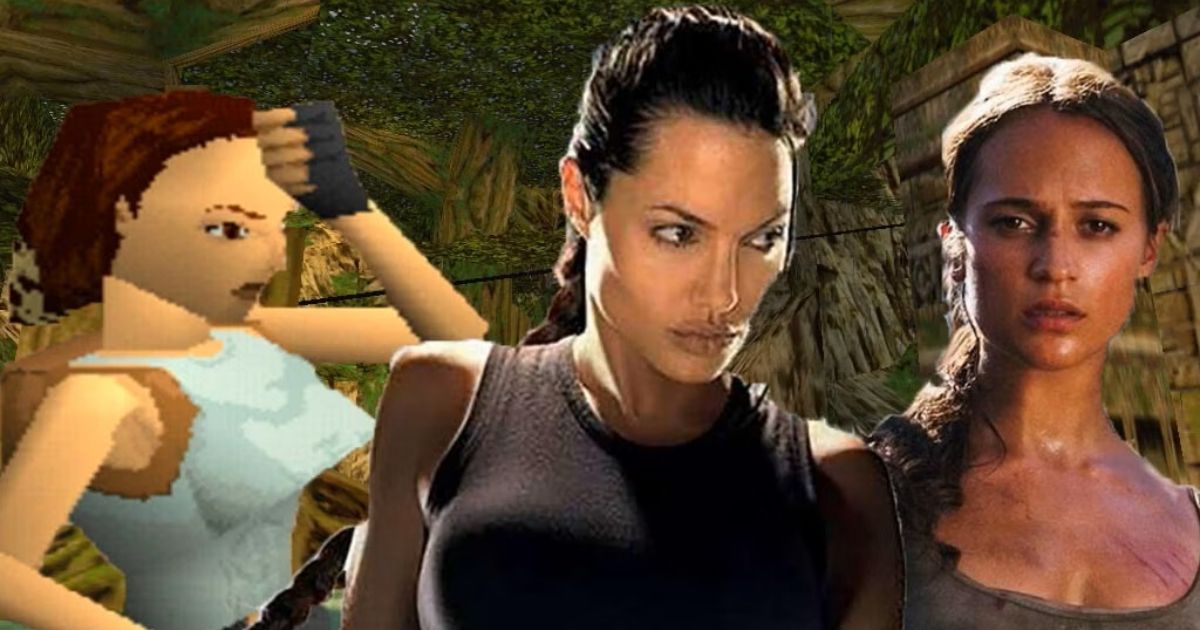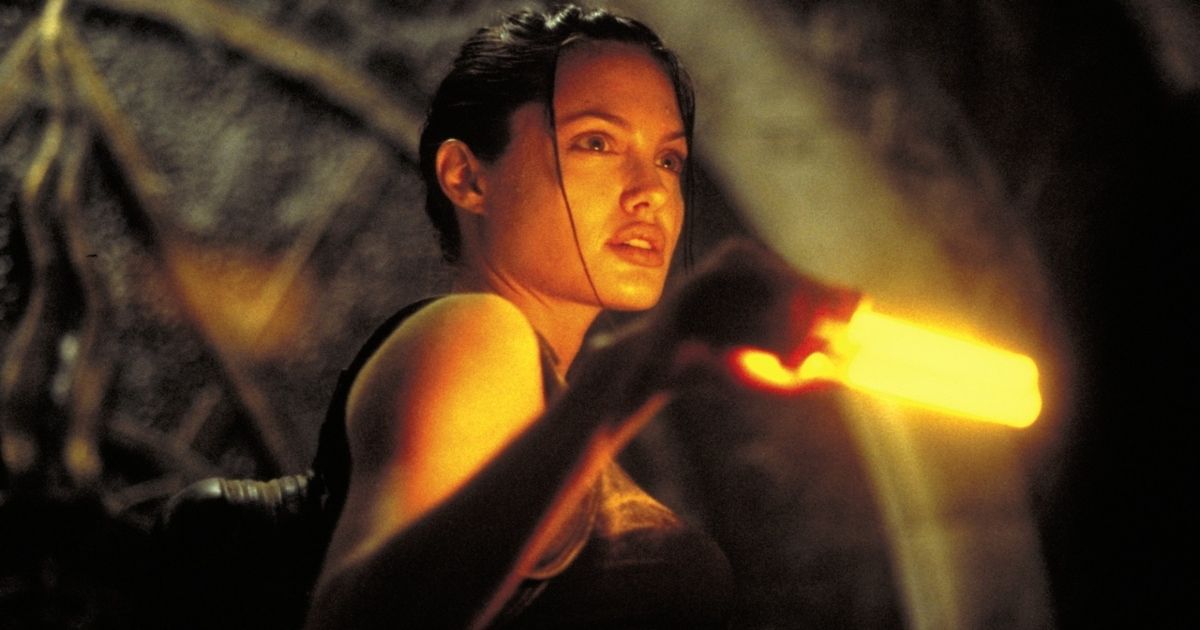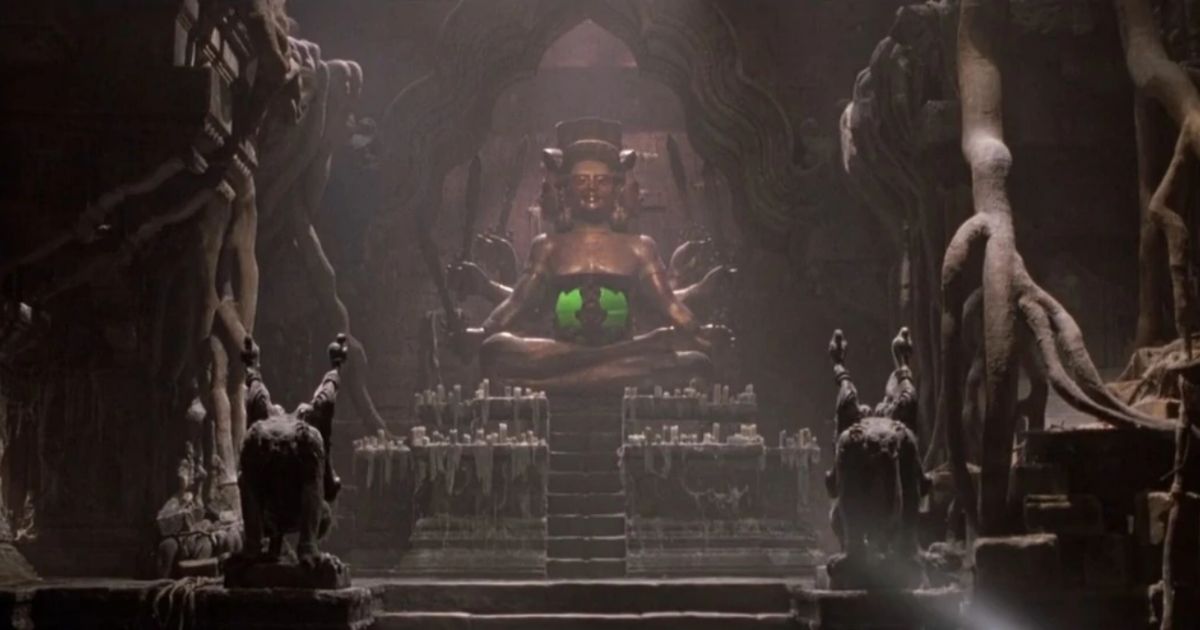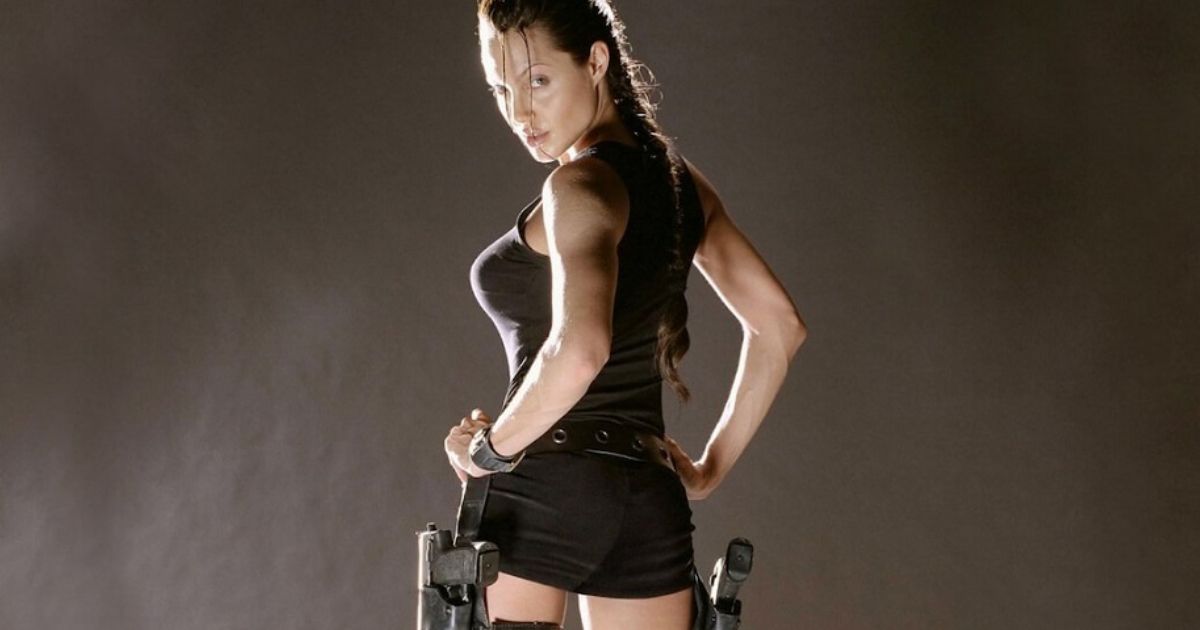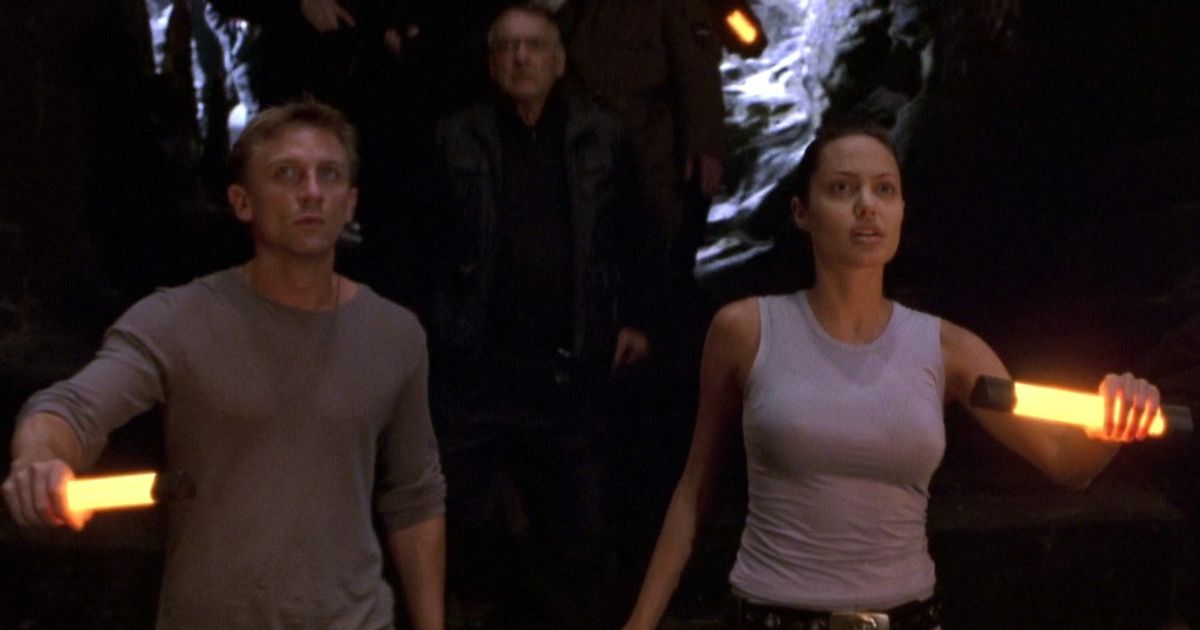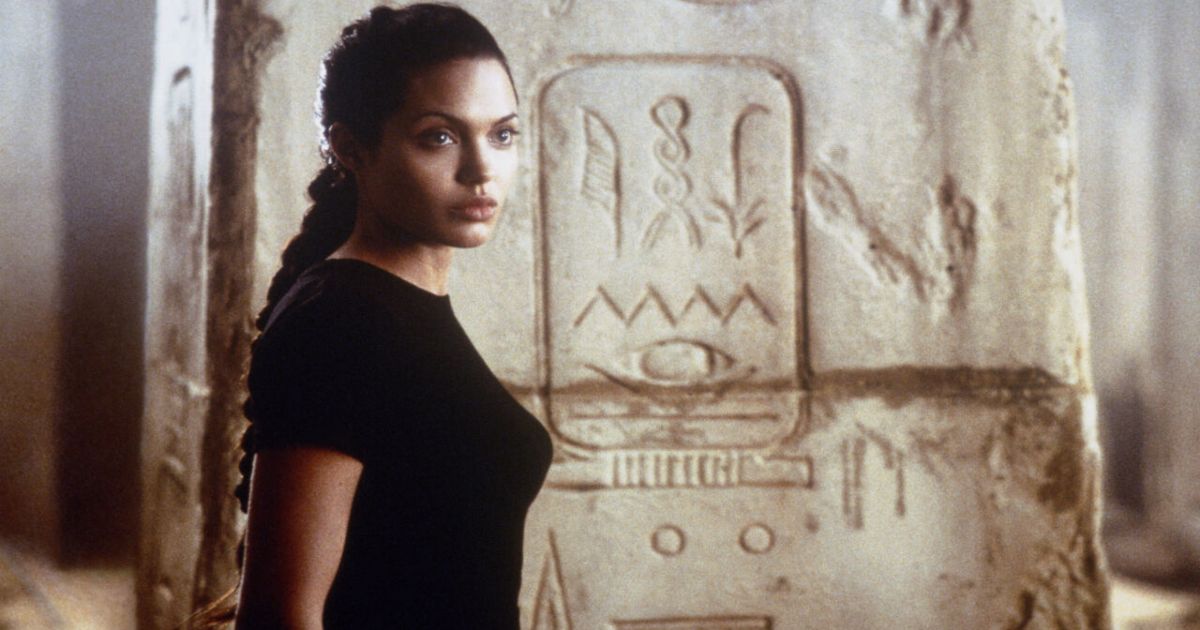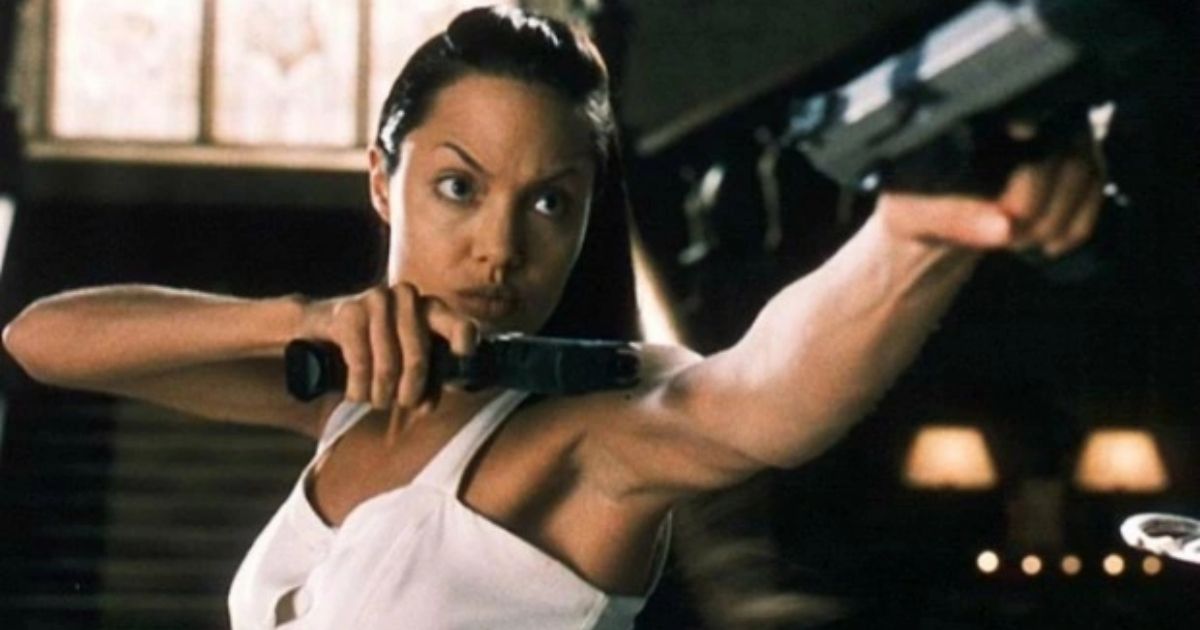With the recent news that the Tomb Raider rights are up for grabs following MGM's indecisiveness after the Alicia Vikander-starring 2018 addition, let's take a look back at where it all began for a live-action Lara Croft.
Based on the hit Playstation series of the same name (presumably "Lara Croft" is in the title to actually differentiate it from the game and to identify its star, unlike the confusingly titled recent Halloween and Scream), Lara Croft: Tomb Raider hit cinemas midway through 2001. As a big budget outing from Paramount, based on one of the most well known game IPs out there, on paper the film took itself seriously.
Enlisting then up-and-coming actress Angelina Jolie as its polygon heroine alongside established actor (and Jolie's father) Jon Voight, with Con Air's Simon West directing, Tomb Raider was setting itself up to be more than the limp control stick works of previous video-game movie adaptions like Mortal Kombat or Super Mario Bros. that had come before it.
Lara Croft Was Sony's Star
Opening in an unknown crypt, Lara Croft hangs upside down from a rope. A relic awaits her at the other side of the room. Immediately, Jolie becomes the character. With close-ups on both her thighs and the double-holstered guns, Jolie is so impossibly beautiful that she embodies the impractically shaped game character that she portrays.
Ambushed, a mechanical spider creature goes for her before she can steal the relic for herself. They tangle and the dual-wielding pistols blare as she shoots the monster to pieces. It feels like a statement from all the filmmakers involved: their Lara Croft is killing this outdated CGI creation with something now flesh-and-blood and fully realized.
Tomb Raider's storyline is as audacious as its protagonist, bringing in a universe-spanning story about a preemptive alignment of the planets, and an Illuminati (yep, those guys again) scheme to combine two halves of an ancient triangle when the eclipse occurs to gain the power to control time. Honestly, it's a lot of fun. While the first act is slow, mostly involving exposition on the triangle and what the artifacts will do, it's Tomb Raider's own determined grit and great action sequences that keep it so watchable.
Thankfully, this isn't an origin story either. This script knows how famous Lara Croft™ is around the globe already that it doesn't need to bog its viewers down with preamble and gets right in to her current adventure. The movie jumps around the globe, and you want to accompany Lara. And quite rightly: The film's settings are beautiful and its locations practical, with shooting taking place on sets like Pinewood in England, and on location in Cambodia and Iceland.
The Action/Adventure Hybrid of Tomb Raider
After its main star, Tomb Raider's biggest strength is its decision to play it straight. This is a fun movie for sure, but its characters aren't mugging and winking to camera. Its inevitable video game easter eggs aren't front and center for diehard fans to point out in the cinema, but the film has enough self-awareness to have fun with its collectibles plot that feels straight out of the games. These characters believe that this is life and death, and you go with it.
With scenes like the raid on Lara's mansion in the dead of night, sprawling from her bungee jumping great halls to their lab, and the garage sequence with multiple high-priced cars, these kinds of action scenes come as second nature to the steady hand of West. Popping with a post-90s ecstasy-inspired dance soundtrack, and with a script from the scribes of the great Face/Off, Lara Croft: Tomb Raider's balmier moments actually work with the action too.
A tomb where the statues awaken to defend against their human invaders stands out, even including its own "boss level" in a gigantic Shiva stone statue that feels at home and closer to the fantasy of The Mummy than the knee-jerk, out of place aliens of Crystal Skull.
Crossovers and Real Physicality in Tomb Raider
With such similar world-ending stakes and fellow source material borrowing, it's super easy to compare Lara Croft: Tomb Raider to any other Marvel outing that we are now so used to. And honestly, this feels like a blueprint for what Marvel Studios have become so complacent with.
Looking back and seeing Jolie physically move around her unbelievable scenarios and interact with her world is so refreshing for a viewer watching 20 years on. In the last segment of the film, Lara jumps from planet to planet around a gigantic orrery while goons fall and are crushed beneath her, and the practicality of the set actually being there makes it all the more tense over the CGI magic show of today's green screen.
Daniel Craig and Other Great British Actors Alongside Lara Croft
Elsewhere, the dialogue remains stuck in the 90s. The matey chat between the lead and her supporting cast feels forced, and reminds one of the bantery dialogue that said Marvel movies have become infamous for. With some dialogue coming from a veritable who's-who of British actors, including Chris Barrie (Rimmer from Red Dwarf) and Noah Taylor (Hitler in Preacher), it's surprising how un-genuine the Englishness of the characters comes off here, with just one too many on the nose "Buggers!" and "Bloody Hells!" deflating scenes of otherwise wonderful action.
As an aside, it's interesting to see a pre-007 Daniel Craig here as Lara's competition. It's cool to see Craig so plucky and his body so wiry before he bulked up for Bond. Arguably with this Tomb Raider and Layer Cake three years after, Barbara Broccoli and MGM would have seen both sides of the actor's abilities (all jumps and kicks in a popcorn film, then important dialogue scenes in the low-budget English sector) as an audition tape for his first outing as Bond in Casino Royale in 2006.
Raiding the Box Office
Lara Croft: Tomb Raider did well at the box office in 2001, bringing in over $274 million on the back of a $115 million budget and cementing Jolie as a star the world over. Lara returned for a sequel, Tomb Raider: The Cradle of Life, which was a sadly bland variation on a theme, unfocused in its jet-setting locations this time around, a film which waits until its last few scenes to get weird. With an even poorer critical response and fairly weak ticket returns ($160 million on a nearly $100 million budget), Jolie said she was finished with playing the character.
In 2004 (a year after Tomb Raider's sequel was released) Esquire would name her The Sexiest Woman Alive, arguably something she wouldn't have been considered for if she had not been fronting her own action movie series with a kick-ass quasi-feminist angle. These two movies would pitch its heroine up against entirely male odds and present her as the toughest and smartest character in the room (like Craig, future leading man Gerard Butler featured in the sequel as the love interest), and it's bizarre that they've been forgotten as such. In what is a lifetime for cinema, the series would be rebooted 14 years later in 2018 with a very solid outing starring Alicia Vikander as Lara Croft.
Tomb Raider's Final Boss
Looking back on Tomb Raider now is akin to peeking through a magnifying glass to a very particular moment in time. Angelina Jolie was not a name brand Hollywood A-lister then. Having come off a run of critically rich returns in Gia and Girl, Interrupted (where she won a Best Supporting Actress Oscar), Jolie was coming up fast as an artistic and critical darling, and a video game movie could have been career suicide.
Instead, it gave her the opportunity to kick the crap out of evil male goons, and be the only woman on screen and in every scene. Tomb Raider, like it or not, catapulted her to a mainstream status that she arguably hasn't managed to achieve since. Like a relic in the sand, crying out to be uncovered again, you can't help but look back at her time as Lara and ask if the film itself is genuinely good, or that we were watching a stratospheric rise from one of Hollywood's most revered stars bringing an otherwise strong enough but unremarkable action/adventure yarn up with her.
For now, it's Game Over for Lara Croft, but the rights are bound to be snapped up by someone soon enough. And with video game movies more popular than ever, and looking at Tom Cruise's return to formerly dead franchises in Top Gun: Maverick, we would be very interested in a legacy sequel if Jolie ever returned to the role...

